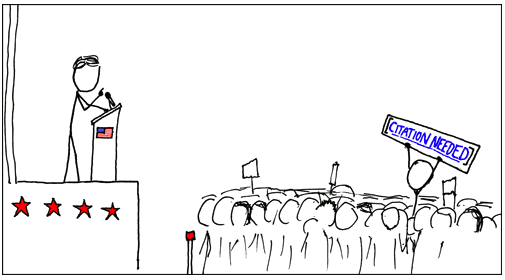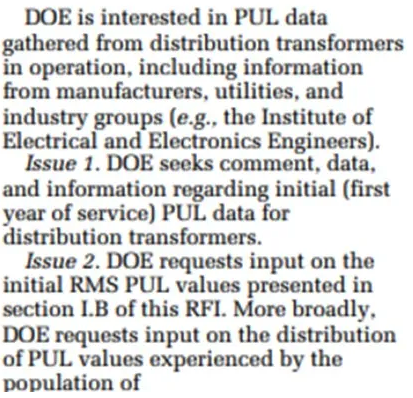Advice for Effective Public Comments in the Federal Rulemaking Process
Having spent a few years earlier in my career entrenched in the rulemaking process behind a number of regulations from the Department of Energy concerning appliance standards, I am able to empathize with the teams of analysts at federal agencies that are tasked with receiving and addressing the feedback that comes in during public comment periods. During every rulemaking process, there are real humans reading every single public comment received (even when those comments number in the thousands), cataloging the specific concerns from the stakeholders, conducting research and analysis regarding the points that were brought up, and ultimately responding to those comments– either by detailing why the existing analysis already addresses the comment or, if the stakeholder comment has successfully done its job, adjusting the analysis during the next round of the rulemaking to account for the issues brought up in the comment.
While submitting a comment in response to the federal rulemaking process can seem intimidating, the truth is that every rulemaking process receives comments from every sort of stakeholder, large and small, with the widest range of expertise on the topics possible (see previous article on how the rulemaking process works and what the function of the public comment period is here). Those involved in the regulatory process know to expect multi-page comment submissions with loads of data and testimonials from powerful trade associations or advocacy groups, but it is also common to receive more pointed and specific comments from concerned private citizens who don’t have any experience in the relevant industry, but simply have their own opinions and concerns. The beauty of the public rulemaking process, however, is that every single comment must be summarized in the next step of the rulemaking, along with a response as to how the new analysis addresses the concerns, no matter who submits it. With that in mind, regardless of whether you are representing a larger organization or just your personal interests as a citizen, what follows are six methods you can employ that will ensure your comment most effectively influence the federal rulemaking process (a few examples of issues and rulemakings perfect for this advice are the net metering rulemaking, the transformers test procedures rulemaking, and the general changes to the energy conservation standards program).
1. Be accurate
This piece of advice should go without saying, but rest assured I have found that it needs to be said. If a comment submitted to the federal agency is found to have a basic inaccuracy in it, then the rest of the comment on that topic will be called into question and it can potentially carry less weight. An underlying inaccuracy in the comment will make responding to, or dismissing, the whole comment all too easy. So while it may be overly obvious, if you hope to make an impact on a regulatory rulemaking then be sure to verify the accuracy in everything you say.
2. Be specific with issues and provide alternatives
If you want your comment to be addressed specifically in the analysis, be sure to include specifics in the comment. Don’t say that something would be detrimental to businesses– state exactly what the detriment would be and why. Don’t state that a discussed technology would not be technologically or economically feasible– state what technology would be feasible and note what exactly is preventing the original technology from being so. Don’t state that a pricing analysis is unrepresentative of the market– describe how and why the analysis is off.
The point is that if the federal agency is given a vague reason for why the analysis is ‘bad’ or ‘off,’ but not given any specifics, then there is nothing tangible to address. The rebuttal to the non-specific comment can simply be to restate the original analysis and reasons behind it. However if a specific reasoning and alternative is instead provided, then you are giving the federal agency something meaty to address. The subsequent analysis must either move towards your alternative or give details about why that alternative is incorrect. But if your alternative is airtight and there are not holes to poke in it, then you will likely find success in shifting the analysis behind the rulemaking.
3. Address the issues the rulemaking asks about– but don’t be restricted to those topics
When reviewing a rulemaking document, whether in the early stages with a Request for Information (RFI) or later during the Notice of Proposed Rulemaking (NOPR) stage, you will often find specific issues called out on which the agency behind the rulemaking is seeking comment. These issues are numbered for ease of finding them, and sometimes (but not always!) listed in a single place at the end of the notice. If you do not see a list at the end of the notice, be sure to go through the document carefully to find them all in-line, where they’ll appear as in the example below.
Source: GPO
When the agency is pointing out these specific issues on which it requests comment, that shows where the most impact of a comment might be received. These are the issues that they might have the least amount of information (or they have information but recognize it’s outdated) concerning, or where they recognize there is considerable debate. Regardless of the reason, all comments on each of these numbered issues end up getting aggregated to get a clear picture of the available information and data before a decision on the direction of the rulemaking is made (though it is important to note that it is not decided by what received the most comments, but rather the accuracy and quality of the comments outweigh the quantity of comments received on an issue). If your position on the rulemaking is related to any of these specifically identified issues, make sure to frame your comment in direct response to the question asked (it even helps to note by number which issue your comment is addressing).
With all of that said, you should not feel that the identified issues are the only ones eligible for response or that the agency will not put equal weight behind comments regarding other aspects of the analysis. You might have comment or information on a topic on which the agency wasn’t focused or didn’t realize was controversial. So while it is important to fit your comments into the box of the issues identified by the notice if they are relevant to those issues, do not feel restricted to those topics. You just might be the only one to bring up this new issue, influencing the next stage of the rulemaking to address it more specifically.
4. Include hard data
The best way to back up your comment and encourage a specific response in the next stage in the analysis is to include your own data as evidence. Perhaps you think this data was overlooked by original analysis, or maybe you think the data that was included originally does not tell the whole story. Either way, if your data supports a change in the analysis and a different conclusion, then providing the full set of that data in your public comment is the best way to influence the rulemaking. Doing so will force the next stage of the analysis to either include that data (and thus changing the course of the analysis towards your desired outcome) or at the very least will require the next stage of the analysis to refute your data.
5. Include sources
Similar to including your own hard data, crucial to an effective public comment is providing evidence towards your points. Providing a comment that breaks down to be essentially subjective is unlikely to be effective, but if you can demonstrate your points with sources– e.g., scientific studies, experimental results, industry information, or marketing analysis, then the comment will make a bigger splash. The more you can ‘show’ your point rather than ‘tell’ it, the more substance and weight your comment will have.
Source: xkcd
6. Offer to follow up
An under-utilized strategy with regards to public comments on the public rulemaking process is making yourself available to the federal agency. The public comment stands on the record as a written statement of your thoughts and concerns on the rulemaking, but in commenting you can also offer to discuss the points further with the agency pursuing the rulemaking. Doing so may result in you being interviewed in the next fact-finding stage of the analysis, or you might also be invited to the next public meeting on the rulemaking to discuss your concerns further. These conversations can be the most valuable tool for really getting your point across and making sure the agency understands the basis of your viewpoint. Written comments only have the opportunity for a single back and forth between commenter and government agency, but conversations allow for the complete back-and-forth required for full understanding between the parties.
Conclusion
While there is no guarantee any single public comment will change the course of a particular rulemaking, if you follow these six guidelines then there is a greater chance that your comment will be well-received by the agency and carry the weight of consideration it deserves. If you have any additional questions on this process, don’t hesitate to reach out in the comments below or by contacting me directly.
Additional Reading
A Guide to the Public Rulemaking Process: Office of the Federal Register
Frequently Asked Questions: Office of Information and Regulatory Affairs
Notice-and-Comment Rulemaking: Center for Effective Government
Rulemaking Process and Steps to Comment: The Network for Public Health Law



